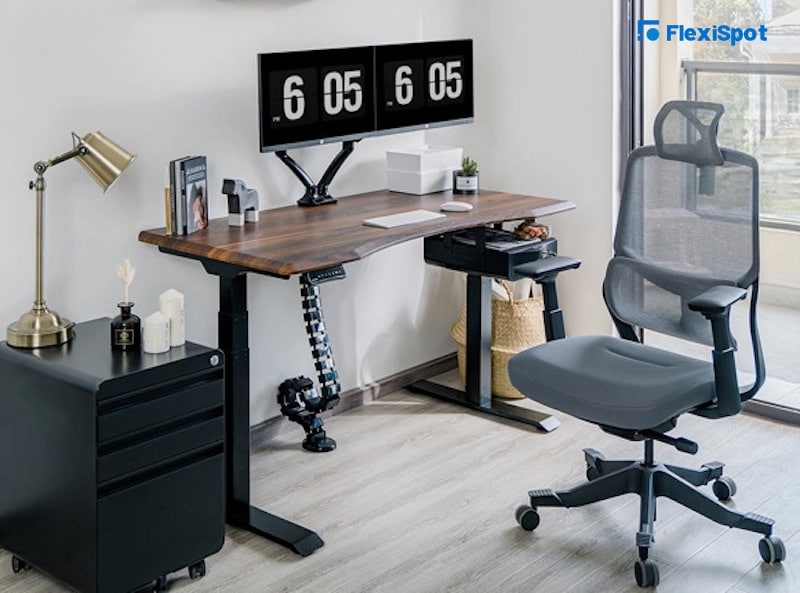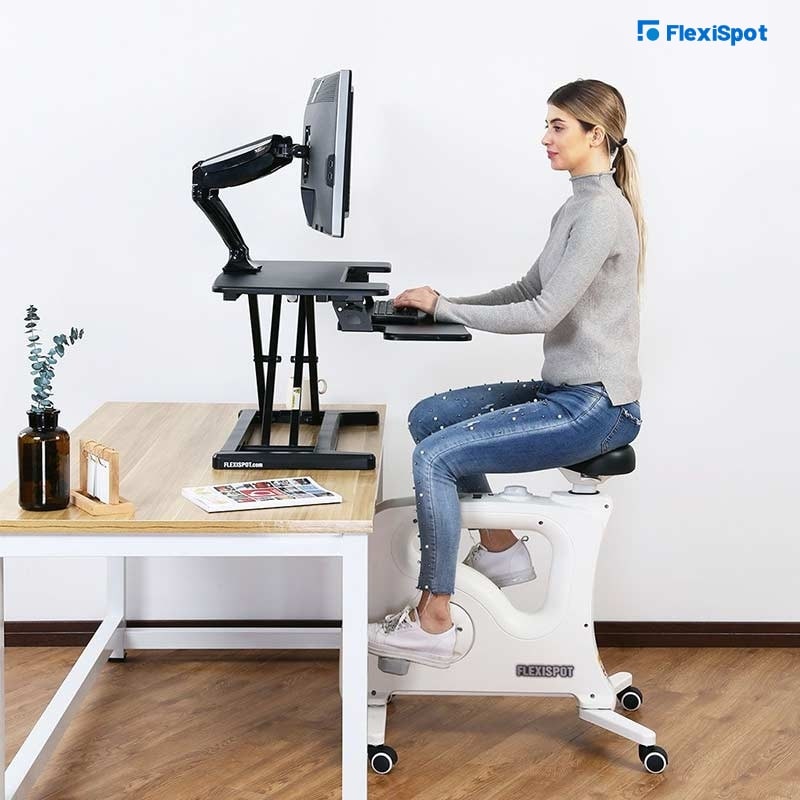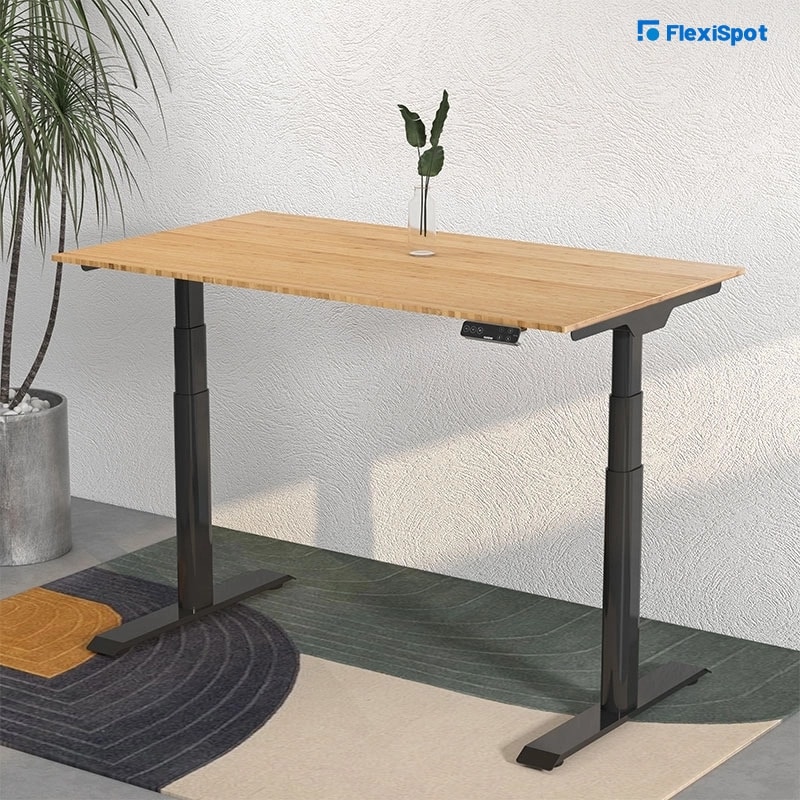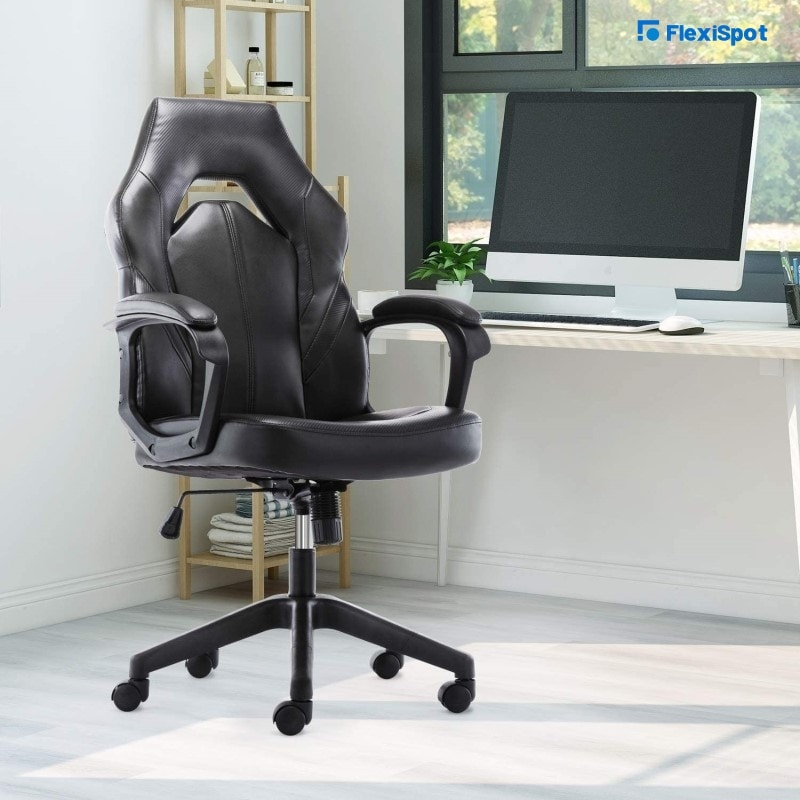With the increasing buzz around office ergonomics, many people who didn't know much about them are now interested in finding out more. From understanding what office ergonomics are to how you can make your workplace more ergonomic and even how ergonomics can help improve outcomes, there’s so much to know.
If you’re looking for answers to these questions and more, you’ve come to the right place! Today, we will answer all your ergonomics-related questions and help you make the right choices for your employees.
1. What Do Office Ergonomics Mean?
Office ergonomics revolve around how people interact with the tools they use at work. If you can understand how people use their work tools, you’ll be able to optimize the design of your workplace accordingly. This lets you make the space safer for your employees, enabling them to work efficiently. Office ergonomics is focused on making the workplace as comfortable for all employees as possible.
2. How Do Good Ergonomics Affect Employee Productivity?
Good office ergonomics have a positive impact on employee productivity. When the employees are comfortable at work, they won’t get tired or exhausted like they would if they weren’t comfortable. They’ll stay more active and thereby, work more attentively and actively which ensures higher productivity and fewer errors.
3. How Do Poor Ergonomics Affect Employees?
Poor ergonomics can be extremely harmful to a person. You may not see the consequences of poor ergonomics in a day. The signs and consequences start to surface over a period of time. Poor ergonomics mean incorrect sitting posture, poor lighting, and incorrect way of using office equipment. When we say the workplace has poor ergonomics, it means the furniture isn’t ergonomic, the office lighting isn’t appropriate, and the office equipment and tools that the employees are using aren’t ergonomic, or the employees aren’t using them correctly.
Poor ergonomics can harm employees in various ways:
Increased Risk of Musculoskeletal Disorders (MSD)
One of the biggest risks of poor ergonomics is MSD. When a person is sitting in an incorrect posture for extended hours, their muscles, tendons, and associated muscle tissues are impacted. Like experts say, sitting is the new smoking, and they’re every bit right. When you’re sitting for long periods of working in the wrong posture, your muscles are under constant stress. The unnecessary stress on the muscles leads to muscle fatigue. The longer the muscles stay fatigued, the more painful sitting will become for you. If you don’t do something about correcting your posture, the damage to the muscles will worsen and lead to serious musculoskeletal complications. Common MSDs caused due to poor ergonomics include Carpal Tunnel Syndrome and Tendonitis.
Lower Back Pain
Pain in the lower back is among the most common consequences of poor ergonomics. Incorrect posture puts excessive stress on your back that causes lower back pain. The muscles of your back and the nerves are being constantly compressed due to the wrong posture and if you don’t correct it in time, you’re putting yourself at the risk of chronic back pain and nerve pain like Sciatica.
Neck and Shoulder Pain
If you’ve got to lower or raise your neck to be able to see your computer screen properly, know that you’re working in poor ergonomic office conditions, and you’ve got to do something about it. You only have to raise or lower your neck when your computer screen isn’t at eye level. Extending or bending your neck puts stress on your neck. The muscles and tendons are stretched more than they should, and this can lead to pain in the neck and shoulders.
Headaches and Migraines
Another aspect of poor office ergonomics is poor lighting. If the lights in our office are too bright or too full, there+ will be an excessive strain on the eyes, and this is one of the most common causes of headaches and migraines in people who’ve got to use the computer all day. Another common reason why workers often complain about headaches and migraine is the glare from the computer screen. Not many employers consider this a problem, but the light coming from the computer screen falls directly on the eyes. Not only can this cause headaches, but it can also lead to weak eyesight in the long run.
Trigger Fingers
If you’re using your fingers too much at work, like typing or gripping things, you’re at a high risk of developing trigger fingers which is the inflammation of the tendons of the fingers, making the slightest finger movements extremely painful.
These are just some of the numerous ways in which poor ergonomics can affect employees.
4. Can the Risks Associated With Poor Office Ergonomics Be Reduced?
Of course. You can reduce the chances of your employees having to suffer from the consequences of poor ergonomics. All you’ve got to do is redo your office space and incorporate all the right ergonomic features to make it ergonomics-friendly. Some of the ways you can improve office ergonomics and reduce the risks for your employees are:
Invest in Ergonomic Office Products
One of the most effective ways of reducing health risks due to poor ergonomics is investing in ergonomic furniture and office equipment, including ergonomic workstations like sit-stand desks, ergonomic chairs, ergonomic keyboards and mice, and adjustable monitor arms. This would enable the employees to adjust the height of their table and chair as per their comfort and adjust the level of their computer screen to match their eye level. Ergonomic keyboard and mouse will omit the risk of MSD like Carpal Tunnel Syndrome and RSI like trigger finger.
Improve Office Lighting
If the lights in your office are too bright or too little, it’s about time you change that. The lights in an office should be just enough to make the office comfortably lit. If the lights are too bright or too dim, it’ll start to put excessive strain on the eyes leading to headaches and weak eyesight in the long run.
Install Screen Shields
The glare from the computer screen can put a strain on the eyes just like bright office lights do, only that the strain from a bright computer screen has a worse effect as it falls directly on the eyes. One way to reduce the glare from the computer screen is to install screen shields for all the employees to reduce the glare.
5. How Do Improved Office Ergonomics Improve Outcomes at Work?
Improved office ergonomics improve the outcomes at work. When employees are comfortable at work, they’re able to focus more on their work. When they work more attentively, the chances of errors are greatly reduced, and their quality of work improves.
Another way improved office ergonomics improves the outcomes is by reducing the physical strain on the employees’ bodies. If you’re tired and exhausted, your only objective will be to get the work done. Delivering quality work won’t be a priority because you can’t wait to get home and lie down on your bed. However, when you’re seated in a highly comfortable ergonomic chair that seems to be hugging the curves of your body and ensuring that your body is well supported, you’ll feel fresher and more active, and therefore, you’ll be able to work more efficiently. You’ll be able to put your heart in to your work which will be reflected in your results.
When you provide an ergonomic work environment to your employees, they’re less likely to call off days. It reduces the turnover rate and thus, reduces the loss the company has to bear due to employee absenteeism. Also, when the employees aren’t all tired and exhausted, they’re more likely to move about the office to meet and greet their fellows. Improved employee engagement and interaction result in a more coordinated workflow. All of this means you can expect a higher quality of work in a lesser time duration.
6. What are Some of the Best Ergonomic Products to Improve Office Ergonomics?
You’ll find plenty of ergonomic products that can help you improve employee productivity and efficiency. If you want us to name a few, our list is as follows:
Sit-Stand Workstations
The risks of sitting for extended durations are plenty. One of the best products to overcome the risks associated with prolonged sitting is sit-stand workstations that allow the user to alternate between sitting and standing so that they aren’t in a single posture for too long. Standing desks like the Kana Pro Bamboo Standing Desk are the most common piece of ergonomic furniture that employers are seen investing in. This is because of the wide range of adjustable features it comes equipped with, making it one of the most versatile tables that meet the comfort needs of all employees.
Ergonomic Chairs
Another ergonomic product that’s worth the investment is an ergonomic chair. The user can not only adjust the height of the chair but can also tilt the seat to match the contour of their body. Ergonomic chairs also offer superior back support that ensures that the entire back is supported well. The best ergonomic chairs also have adjustable armrests to provide the user with the absolute best work experience.
Ergonomic Keyboards and Mice
These are must-haves for all offices. An ergonomic keyboard is specially designed to ensure that your hands are placed at an appropriate angle and distance from one another. They also have wrist support. An ergonomic mouse is designed so you don’t have to move it too aggressively with minimal buttons that are soft and sensitive to reduce the strain on wrists and fingers.









